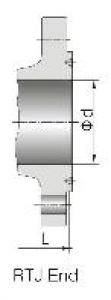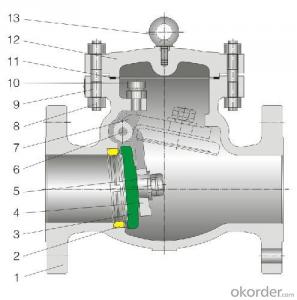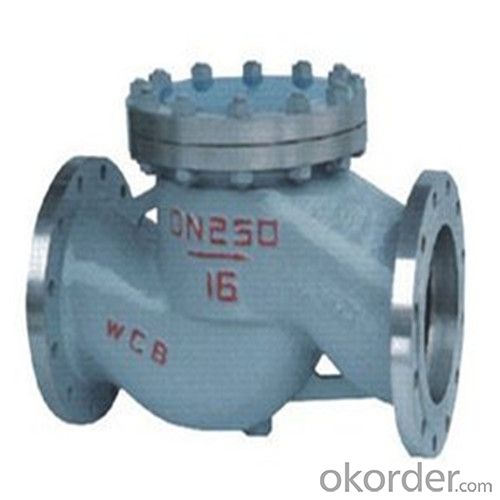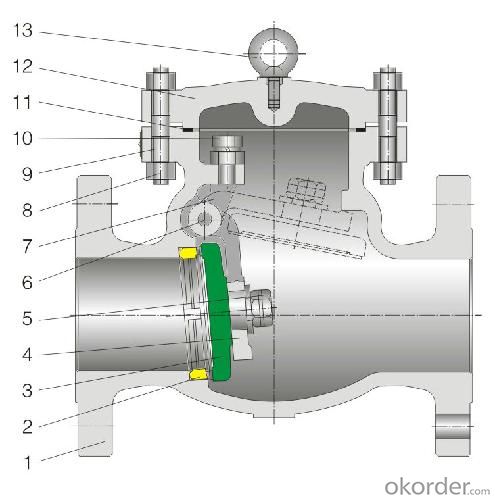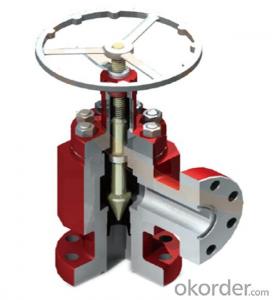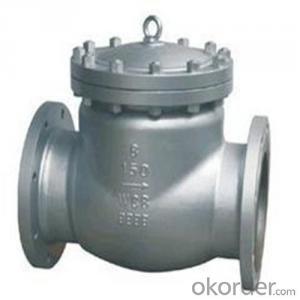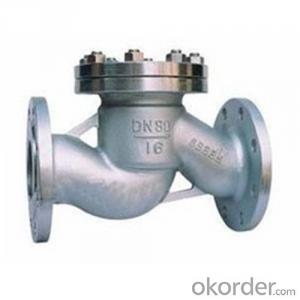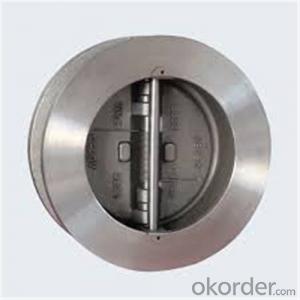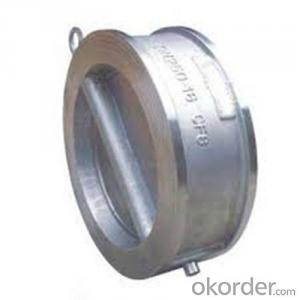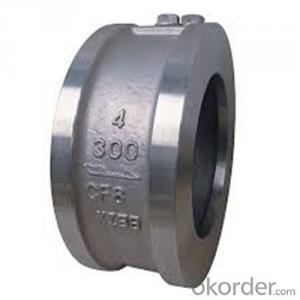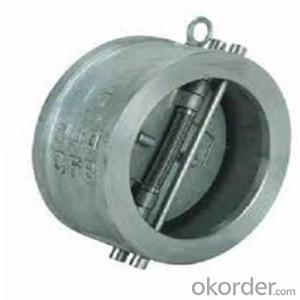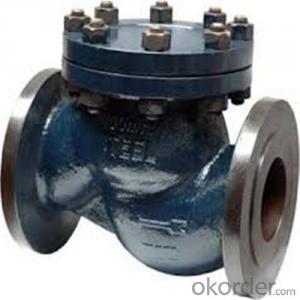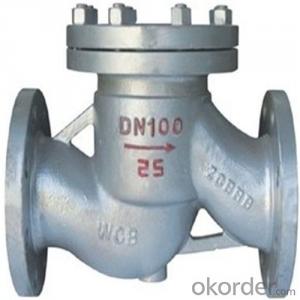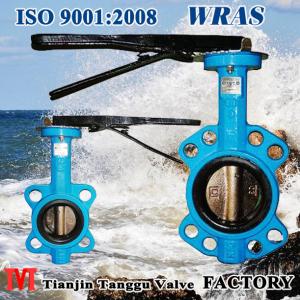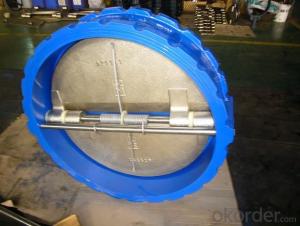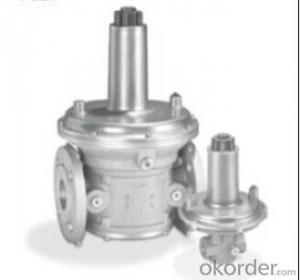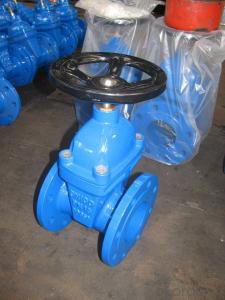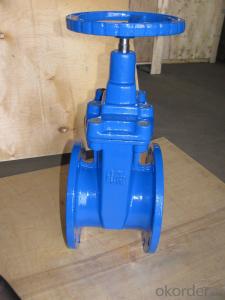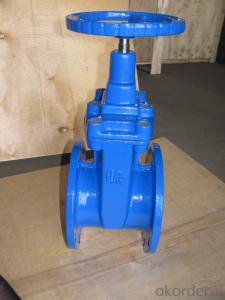API Cast Steel Lift Check Valve Size 600 mm
- Loading Port:
- Shanghai
- Payment Terms:
- TT OR LC
- Min Order Qty:
- 10 pc
- Supply Capability:
- 100 pc/month
OKorder Service Pledge
OKorder Financial Service
You Might Also Like
API Cast Steel Lift Check Valve 150 Class
The features of Cast Steel Lift Check Valve
Bolted Bonnet;Swing and lift disc;Metallic seating surfaces.
Body and Bonnet Connection of Cast Steel Lift Check Valve:
The body and bonnet of Class150~Class900 check valves are usually with studs and nuts.And the body and bonnet of Class1500~Class2500 check valves are usually of pressurized seal design.
Body-To-Bonnet Joint of Cast Steel Lift Check Valve:
Stainless steel + flesible graphite wounded gasket is used for Class 150 and Class 300 check valve;Stainless steel + flexible graphite wounded gasket is used for Class 600 check valve,and joint gasket is also optional for Class 600 check valve;Ring joint gasket is used for Class900 check valve;Pressurized seal design is used for Class 1500~Class 2500 check valves.
Seat of Cast Steel Lift Check Valve:
For carbon steel check valve,the seat is usually forged steel.The sealing surface of the seat is spray welded with hard alloy specified by the customer.Renewable threaded seat is used for NPS<10 check="" valves="" and="" welded="" on="" seat="" can="" be="" also="" optional="" if="" being="" requested="" by="" the="" customer.welded="" is="" used="" for="" nps="">12 crbon steel gate valves .Forstainless steel check valve,integral seat is usually adopted ,or to weld hard alloy directly integrally.Threaded or welded on seat is also optional for stainless steel check valve if being requested by the customer.
Parameter of Cast Steel Check Valve:
Standard Criteria | ASME/ANSI/API customize |
Pressure Rating | 150 Class 300 Class 600 Class 900 Class 1500 Class 2500 Class customize |
Valve Size | 50 mm 65 mm 80 mm 100 mm 125 mm 150 mm 200 mm 250 mm 300 mm 350 mm 400 mm 450 mm 500 mm 600 mm 650 mm 700 mm 750 mm |
2 inch 2.5 inch 3 inch 4 inch 5 inch 6 inch 8 inch 10 inch 12 inch 14 inch 16 inch 18 inch 20 inch 24 inch 26 inch 28 inch 30 inch customize | |
Actuator | Automatic customize |
Connection | Butt Welding Flange RF Flange RTJ customize |
1-Body Material | A216 WCB A351-CF8 A351-CF8M customize |
2-Seat ring | A351-CF8 A351-CF8M A105+13Cr Tool Steel+A105 customize |
3-Disc | Tool Steel+A216 WCB A351-CF8M A351-CF8 A216 WCB+13Cr customize |
4-Arm | A351-CF8 A216 WCB A351-CF8M customize |
5-Nut | A194 8M A194-8 A194 2H customize |
6-Arm pin | A182-F6a A182-F316 A182-F304 customize |
7-Yoke | A351-CF8 A351-CF8M A216 WCB customize |
8-Bonnet nut | A194 8M A194-8 A194 2H customize |
9-Bonnet bolt | A193-B8 A193-B8M A193-B7 customize |
10-Bolt | A193-B7 A193-B8 A193-B8M customize |
11-Gasket | graphite+304 graphite+316 customize |
12-Bonnet | A216 WCB A351-CF8M A351-CF8 customize |
13-Eye bolt | A181 customize |
Design Standard | API 6D BS 1868 customize |
Connection Standard | API 605 ASME B 16.25-2007 ASME B 16.47A ASME B 16.47B ASME B 16.5 MSS SP-44 customize |
Test Standard | API 598 API 6D customize |
Face to Face | ASME B 16.10 customize |
Pressure-temperature ratings | ASME B 16.34-2004 customize |
Wall thickness dimension | API 600 BS 1868 |
FAQ of Cast Steel Check Valve:
Q1:I can’t find the type of steel check valve which I need. what can I do?
The chart above only lists out some common composition of steel check valve parts.We may provide other different parts material composition according to the customer's request or the actual valve working condition.
Q2:Which certification do your products pass?
Our products are in accordance with ISO 9001、ISO 14001、API 6A、API 6D、TS CE、API607/6FA/BS6755.
- Q: problem seems like a bad IAC valve - When I start it, it runs at 2000 for 10 sec then starts varying between 1000 2000 rpm at idle. Over 2400 it is level. If I pull the connector it will vary quickly around 1500 rpm as soon as it is started. Cold or hot no difference. 10 sec delay will happen every time it is started.I just replaced the air cleaner and cleaned the PCV valve, which seems to work about the same as a new one, then this started. Coincidence or something else wrong - like an air leak? How can I be sure it is the IAC??I've pulled the air intake and plugged the bottom throttle port and it goes to idle. the only trouble code is 0505 unless of course I pull the connector. Pulling the throttle position sensor plug yields a constant 2000 rpm and an code indicating it is open.thanks.
- yup sounds like the iac valve,or quite possible that your low on coolant,it requires coolant as a media to transmit signal to ecu,coolant also runs through the valve,check coolant first,they tend to leak at the bypass gasket between cyl head,the housing behind where egr mounts,good luck
- Q: I want to know if a person with multiple leaking heart valves left untreated, is in any more danger than someone with a single leaking heart valve.
- Depends on how severe the leak is. If multiple valves have only trace leakage then no its not more worrisome then someone with Mild, moderate or severe leakage in one valve because trace leakage is a very small amount and almost everyone one has some. Now if someone had multiple valves that were moderate or severe yes that is more worrisome then some one with only 1 mild, moderate or severe valve leakage. If multiple valves have only mild leakage i think 1 valve with severe leakage is still more severe. I am NOT a doctor so this is just things that i am fairly sure about but not 100% sure of. Go to a cardiologist and ask him/her if you want a reliable accurate answer.
- Q: Hi,I have just bought a Northface Hammerhead and for some reason when biting on the bite valve no water is being released. Does anyone have any idea why this might be, or can tell that I am missing something obvious. Thanks very very much.
- My the north face bite valve never worked either.
- Q: I had a doctor who was suspicious of me having a heart valve problem. I don't want to be on medication for the rest of my life. I only want to change my diet, pray, exercise, and meditate. I don't believe the doctor has that cure for that problem that's if it was a heart valve problem.
- It depends on what sort of heart valve problem you have, how bad it is, and how bad the symptoms are. Sometimes you don't need to do anything special except watch the diet and lifestyle, sometimes you need medicine, and sometimes the cure is surgical repair or replacement of the valve. I think prayer is a fine thing to help, but the Lord also gave us the skills so doctors could provide something a little more physical. If your heart valve problem is bad enough, it can cause damage to your heart and the rest of your body that all the prayer, diet, exercise and meditation in the world won't help fix. However, as a patient, it's always your decision if you want to take the doctor's advice or not. Otherwise you could find yourself dead, and explaining to God why you chose not to take the help He provided for you. So before you go making any decisions, you need to wait until you find out what the entire story is. Then weigh up all your options carefully,and decide.
- Q: the blow off valve has a hose that goes to the intake. Do you need that hose.
- if you want it to operate properly the yes you will need it. The valves are also adustable but you need a tech manual to and special tool to do it propperly dont just guess at its setting rather know it. I assume the picture i looked at was your engine. Unless you like taking chaces i would recomend you put your timing belt cover back in place. If anything should get in there between your t-belt and gears or pullys the belt could be damaged and if it does get damaged you could damage the valves in the event of t-belt failure. I know people like to see the belt and gears moving and if that is what you are wanting i would suggest installing one of the clear t-belt covers that are available. unfortunatly i do not know who makes them. if you cant find out go to a car show and talk to gear heads that have them on there cars.
- Q: Water is seeping up around relief valve threads. Tried tightening but could not get it any tighter.
- Use plumbers tape. Take of the valve and put a 3 or 4 wraps of plumbers tape and put it back on it should be good then.
- Q: Electric Hot Water Tank Pressure Release Valve Leaking, Why?
- Our big brother( homeland security) has instructed the water company's to install anti back up valves in the water system to keep us safe from terrorists trying to back flow chemicals into the water system. I would check with water company and see if this has been recently done at your house meter.The problem is no where for the pressure to go when the water heats up. you will as all others will have to install a pressure expansion tank. If you find this not to be the case I would put a pressure gauge on one of your outside water valves and check the pressure.as the safety valve you are referring to will start to re leave some where around 70lbs and pop at 150 lbs. to keep from too much pressure build up. This can be caused by a tiny leak in the pressure regulator located in the incoming line. Hope this helps
- Q: does that mean it doesnt work?, how can i tell if the egr valve works still?
- Not sure how to answer. First the vacuum line going to your egr only has vacuum under certain conditions and never at idle. If you have an egr code/problem.... email me with code/syptom and vehicle info i'll try to help further. :)
- Q: I need to find a solenoid valve with the following specifications:2-way, 1 inch nozzles (both male)needs to be able to handle the pressure from a CO2 tank (~1000 psi)needs to work with 12vdc less than 10 ampsits either a solenoid, or some other type of valve which will release the CO2 when we tell it to electronically
- The leading maker of solenoid valves is ASCO. Their website is shown below. If a valve that fits your application exists they probably make one. If you can't find a suitable solenoid then you need to consider a pneumatic valve operated by a solenoid valve. That is a common solution for a problem like yours. As to the male connections. If they are not available then you can just use a pair of threaded fittings (pipe nipples) to change the configuration.
- Q: Would a 96 saturn egr valve work on a 96 camaro
- Why would it. They are from different cars, with different engines.
Send your message to us
API Cast Steel Lift Check Valve Size 600 mm
- Loading Port:
- Shanghai
- Payment Terms:
- TT OR LC
- Min Order Qty:
- 10 pc
- Supply Capability:
- 100 pc/month
OKorder Service Pledge
OKorder Financial Service
Similar products
Hot products
Hot Searches
Related keywords

